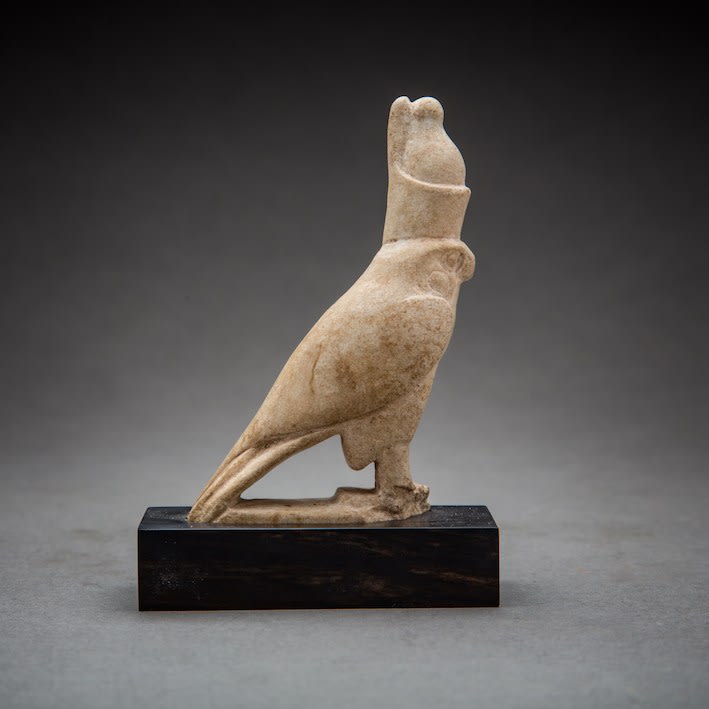Stone Falcon Horus Figure, 664 BCE - 525 BCE
Stone
height 9.1 cm
height 3 5/8 in
height 3 5/8 in
LK.009
Further images
The Egyptians have left us with what is perhaps the most detailed legacy of an ancient civilization. They had strong beliefs about what would happen after the death and spent...
The Egyptians have left us with what is perhaps the most detailed legacy of an ancient civilization. They had strong beliefs about what would happen after the death and spent much of their earthly lives preparing for the next world.
The falcon is one of the few clear examples of a motif known in Egypt's Predynastic times that continued into the Dynastic period, after 3100 B.C., when it symbolized the king as an embodiment of the falcon-headed god Horus, the patron deity of kingship. Horus was the falcon-deity, originally the sky-god, identified with the king during his lifetime Known more importantly as the son of Osiris and Isis. Horus was also the avenger of his father Osiris, who was killed by Set.
Masterfully carved from stone, the falcon's shape and profile are familiar from later representations. In all his forms, the Egyptian Horus was seen as the Prince of Gods, other gods of the pantheon becoming subordinate to him. Archaeologists researching the sites of Ancient Egypt have uncovered numerous falcon figures, ranging from life-size representations to tiny statuettes crafted with exquisite precision. This is also partly due to the fact that the falcon was sacred to Sokar, the Memphite patron of the Dead.
The falcon is one of the few clear examples of a motif known in Egypt's Predynastic times that continued into the Dynastic period, after 3100 B.C., when it symbolized the king as an embodiment of the falcon-headed god Horus, the patron deity of kingship. Horus was the falcon-deity, originally the sky-god, identified with the king during his lifetime Known more importantly as the son of Osiris and Isis. Horus was also the avenger of his father Osiris, who was killed by Set.
Masterfully carved from stone, the falcon's shape and profile are familiar from later representations. In all his forms, the Egyptian Horus was seen as the Prince of Gods, other gods of the pantheon becoming subordinate to him. Archaeologists researching the sites of Ancient Egypt have uncovered numerous falcon figures, ranging from life-size representations to tiny statuettes crafted with exquisite precision. This is also partly due to the fact that the falcon was sacred to Sokar, the Memphite patron of the Dead.







